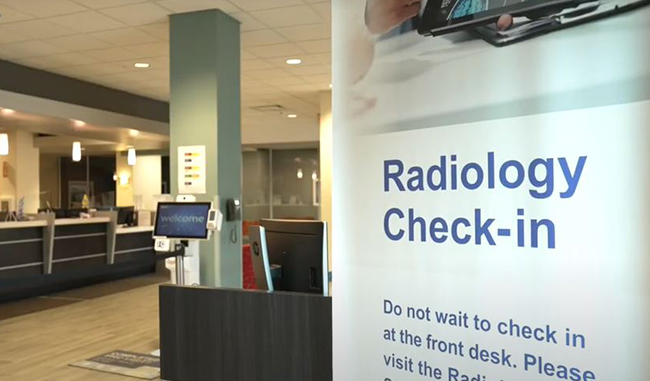
Why Are My Muscles Sore for No Reason? 10 Potential Causes
Muscle soreness happens to virtually everyone at some point. Many different factors can cause it, and sometimes it happens without a clear cause.
If a person is experiencing muscle pain for seemingly no reason and it’s not going away, they might be tempted to take over-the-counter (OTC) pain relief medication to manage their symptoms. But what about pain that does not go away with OTC treatments?
While pain medication can help with short-term pain, chronic muscle pain can seriously affect a person’s quality of life. Muscle pain that does not go away or comes back often may require a trip to the doctor’s office.
What causes sore muscles?
Muscle soreness is also called myalgia. People can feel sore in one or more muscles, as well as the surrounding tissues, like fascia, ligaments and tendons.
Muscle soreness can happen for a few different reasons. Sometimes, it’s due to exercise, but it can also be linked to inflammation or an underlying health condition.
5 common reasons for sore muscles
Muscle soreness is a symptom that can stem from many different causes, including lifestyle factors, exercise and underlying medical conditions. Common causes of muscle soreness are:
1. Exercise or physical work
Delayed onset muscle soreness, or soreness that happens 1 to 3 days after physical activity, can happen when people who aren’t properly conditioned engage in strenuous exercise. It’s common in muscles that contract while being stretched at the same time. The pain typically subsides within 7 days.
2. Cold, flu or other infectious illnesses
It’s common to get muscle soreness during or after an infectious illness, but this does not always happen with every illness.
For example, COVID-19 can cause muscle aches for some people but not others.
Infectious illnesses that commonly cause muscle pain include:
- Flu
- Lyme disease
- Malaria
- Polio
- Trichinosis
- Rocky Mountain spotted fever
3. Electrolyte imbalance
Exercise can change the concentrations of electrolytes in the blood, cells and tissues, especially sodium (Na+) and potassium (K+).
When a person does not have enough electrolytes and does not drink enough water, it can lead to muscle pain and increase the likelihood of delayed onset muscle soreness.
4. Muscle tension due to stress
Stress can cause muscles to tense up. When this happens on a regular basis, it can lead to chronic muscle tension and sometimes muscle pain.
5. Alcohol and certain drugs
Alcohol, alongside certain medicines, can cause muscle pain. This is especially true for people taking diuretics for blood pressure.
Cholesterol-lowering medications called statins can also cause muscle pain in some people.
5 less common causes of muscle soreness
Now we’ve explained common reasons for sore muscles, we can also identify less common ones. Muscle pain, soreness and tenderness can also be due to chronic conditions.
1. Fibromyalgia
People with this condition feel chronic pain throughout their bodies. With fibromyalgia, muscles and surrounding tissues feel deep pain or tenderness on a regular basis. The pain often comes with other symptoms, including trouble sleeping, tiredness and headaches.
Experts believe fibromyalgia may stem from differences in how pain the brain processes pain. It can affect a person’s quality of life, but treatments are available to help people with a fibromyalgia diagnosis.
2. Myositis
This is an autoimmune condition characterized by chronic muscle inflammation. It sometimes involves muscle pain, alongside other symptoms.
There are a few types of myositis that may have muscle pain as a symptom, including:
- Dermatomyositis: As well as muscle pain, dermatomyositis includes skin issues like rashes and dryness. This condition is more common in African American women.
- Polymyositis: Involves muscle weakness around the center of the body, such as in the thighs, hips, shoulders and back.
Diagnosis for this rare condition involves a combination of a physical exam, lab testing, imaging and, sometimes, a muscle biopsy.
Treatment is available to help lower inflammation and control the body’s immune system response.
3. Lupus
Lupus is an autoimmune disease where the immune system mistakenly attacks tissues, leading to inflammation and pain in various parts of the body.
It can come with chronic pain and inflammation in the joints, muscles and bones. Lupus can also involve muscle weakness.
No single test can diagnose lupus. Providers typically diagnose the condition based on symptoms and lab test results.
There’s no cure for lupus, but treatment can help manage symptoms and long-term complications.
4. Rhabdomyolysis
This condition is typically caused by an injury to the muscle tissue that leads it to break down and die, releasing muscle cell contents into the blood. This can happen if the muscle is injured or if a person ingests a toxic substance that damages their muscles.
Symptoms of rhabdomyolysis include muscle weakness and pain, and dark, tea-colored urine.
Rhabdomyolysis requires immediate medical attention. Getting a fast diagnosis and treatment can help prevent life threatening complications.
5. Hypothyroidism
Low back pain or muscle pain in other areas of the body can be a symptom of hypothyroidism. In some cases, it may be the only symptom.
Hypothyroidism is when the thyroid gland doesn’t make enough thyroid hormone. This is called primary hypothyroidism.
People most often get hypothyroidism when they don’t consume enough iodine, or they have an immune reaction that affects their thyroid.
If a provider suspects a person has hypothyroidism, they’ll request a thyroid hormone screening to make a diagnosis.
Muscle soreness diagnosis
People should see a provider if they’re experiencing severe or chronic muscle pain. A primary care physician can do an initial assessment of the person experiencing muscle soreness and connect them with the right specialists if further testing is needed.
To diagnose the cause of muscle soreness, a provider will get a medical history and perform a physical exam.
They may also ask about:
- What the pain feels like
- Where it hurts
- When it happens
- What helps or makes it worse
If a provider suspects an underlying condition, they may:
- Perform a neurologic assessment
- Order lab tests
- Order an electromyogram (EMG)
- Do a nerve conduction study
- Refer to a specialist
They may also request genetic testing, muscle imaging and a muscle biopsy.
Treatment
Muscle pain treatment will largely depend on the underlying condition, but may include:
- Treatment for the underlying condition (if any)
- Drug therapy, such as pregabalin, gabapentin or amitriptyline
- Nutraceuticals
- Physical therapy
- Strength training
Takeaway
Muscle pain is a common symptom that can result from various causes. Usually, these are temporary and not serious, but sometimes muscle pain can indicate a more serious or chronic medical condition.
If a person experiences severe muscle pain or their condition has persisted without improvement for more than 3 days, they should consider consulting a provider.
Crystal Run Healthcare offers a dynamic team of orthopedic surgeons, sports medicine specialists and podiatrists who have trained and honed their expertise at the greatest academic medical centers in the United States. The team is able to reset, repair, replace and revitalize simple or complex bone, joint or muscle conditions, including chronic pain conditions.
- About myositis. (n.d.). https://www.myositis.org/about-myositis/
- Cholesterol medications. (2024). https://www.heart.org/en/health-topics/cholesterol/prevention-and-treatment-of-high-cholesterol-hyperlipidemia/cholesterol-medications
- Dermatomyositis. (2025). https://www.myositis.org/about-myositis/types-of-myositis/dermatomyositis/
- Fibromyalgia. (2025). https://rheumatology.org/patients/fibromyalgia
- Fischer SJ. (2021). Can the coronavirus affect my bones and joints? https://www.orthoinfo.org/en/diseases--conditions/can-the-coronavirus-affect-my-bones-and-joints/
- Hypothyroidism. (2021). https://www.niddk.nih.gov/health-information/endocrine-diseases/hypothyroidism
- Lupus and the joints, muscles, and bones. (2021). https://www.lupus.org/resources/how-lupus-affects-the-muscles-tendons-and-joints
- Muscle cramps. (2022). https://orthoinfo.aaos.org/en/diseases--conditions/muscle-cramps
- Polymyositis. (n.d.). https://www.myositis.org/about-myositis/types-of-myositis/polymyositis/
- Signs and symptoms of rhabdomyolysis. (2025). https://www.cdc.gov/niosh/rhabdo/signs-symptoms/index.html
- Stress effects on the body. (2024). https://www.apa.org/topics/stress/body
- Types of blood pressure medications. (2024). https://www.heart.org/en/health-topics/high-blood-pressure/changes-you-can-make-to-manage-high-blood-pressure/types-of-blood-pressure-medications
- What is lupus? (2020). https://www.lupus.org/resources/what-is-lupus
- Yoon WY, et al. (2020). Curcumin supplementation and delayed onset muscle soreness (DOMS): effects, mechanisms, and practical considerations. https://pmc.ncbi.nlm.nih.gov/articles/PMC7669469/

 Optum Radiology at Crystal Run Healthcare
Optum Radiology at Crystal Run Healthcare Request medical records online
Request medical records online